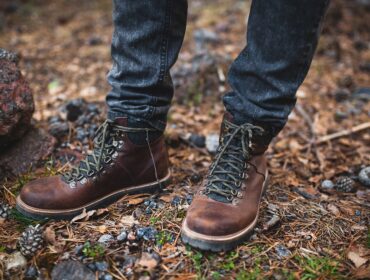When stepping into the great outdoors, your clothing becomes your first line of defense against nature. From icy winds to sudden rain, blistering sun to rugged trails, the right layers can make or break your adventure. Whether you’re climbing a peak, camping in a national park, or hiking forest trails, you need adventurer clothing that is reliable, performance-driven and supports movement. It should provide comfort and adapt to unpredictable weather. At SunnySports.com, we believe your outfit should work as hard as you do.
Here’s a complete guide to essential outdoor clothing every adventurer should have, layer by layer.
1. Base Layers

Base layers are worn directly against your skin. Their main job is to wick away moisture, keeping you dry and comfortable whether you’re sweating on a steep climb or shivering in early morning cold. Base layers come in different weights – lightweight for high activity in cool weather, midweight for everyday use, and heavyweight for cold conditions.
Common base layer pieces include:
2. Mid Layers

Mid layers provide insulation. This is where you trap body heat without letting moisture build up. The right mid layer keeps you warm when temperatures drop but breathes enough so you don’t overheat during movement. Fleece, synthetic insulation, and lightweight down are all popular choices.
Typical mid layer options:
3. Outer Layers (Shells)

The outermost layer – also called a shell – is your protection from the elements. Whether you’re caught in a storm or trekking through windy ridges, your shell keeps rain, snow, and wind out. A good shell should be waterproof, windproof, and breathable.
Shell layers often include:
4. Insulated Jackets

When facing serious cold, an insulated jacket is essential. These jackets come with either synthetic fill (great for wet conditions) or natural down (ultra-lightweight and very warm in dry cold). They’re ideal for camp time, rest breaks, or alpine summits.
Common types include:
5. Hiking Pants and Shorts

Your lower half needs protection and flexibility on the trail. Hiking pants should be stretchy, breathable, and tough enough to handle rocks, branches, and varying temperatures. Convertible pants that zip off into shorts offer great versatility.
Go-to bottoms include:
6. Shirts and Tops

Your everyday trail shirt should balance comfort, breathability, and sun protection. Many adventure shirts are made with fabrics that dry quickly, wick sweat, and shield you from UV rays.
Useful tops:
7. Waterproof and Windproof Layers

For changing conditions or rainy climates, you’ll want layers specifically designed to handle precipitation and high winds. These layers are often lightweight and packable so you can pull them out when needed.
Essentials include:
8. Cold Weather Accessories

Don’t overlook small items – they make a big difference in extreme environments. Keeping your head, hands, and feet warm ensures better circulation and keeps your core body temperature stable.
Cold weather accessories include:
9. Footwear and Socks

Your adventure starts at the feet. Good outdoor footwear needs to offer support, grip, and weather protection. Match your shoes to your activity—low-cut trail shoes for speed, mid-cut hiking boots for support, and mountaineering boots for the extremes. And don’t forget technical socks – they reduce blisters and keep your feet dry.
Footwear types:
Sock types:
10. Sun Protection Clothing

Exposure to the sun can be just as risky as cold. Look for clothing with built-in UPF protection, wide brims, and ventilation to keep cool during long hikes or desert treks.
Sun protection gear includes:
11. Campwear and Sleep Layers

When you’re back at camp, you need clothing that’s all about comfort and recovery. Soft, breathable fabrics help your body wind down and stay warm at night.
Common sleep and camp layers:
Conclusion
Outdoor clothing isn’t about fashion – it’s about function. The right gear allows you to move freely, adapt to the weather, and stay focused on the experience, not discomfort. Whether you’re a weekend hiker or a full-time adventurer, every layer you wear plays a role in your comfort and safety.
At SunnySports.com, we offer trusted clothing systems built for all climates and all kinds of explorers. Start with the basics – layer smart, pack light, and dress with the terrain in mind. The adventurer clothing isn’t just gear; it’s part of the adventure.
FAQs: Adventurer Clothing
What are the most important layers for outdoor adventures?
The three key layers are base layer (moisture-wicking), mid layer (insulation), and outer shell (weather protection).
What is the difference between a softshell and a hardshell jacket?
Softshell jackets are breathable and flexible; hardshells offer full waterproof and windproof protection for harsh conditions.
Can I wear cotton when hiking or camping?
Cotton is not recommended for outdoor activities as it retains moisture, which can lead to discomfort or hypothermia in cold weather.
How should I dress for hiking in cold weather?
Use a base layer for moisture management, a mid layer for insulation, and an outer shell for wind and water resistance.
What clothing is best for hot and sunny conditions?
Lightweight, breathable fabrics with UPF sun protection and ventilation features are ideal for hot climates.





